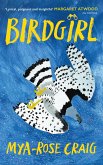LeBuff shares stories about his interactions with duck hunters, alligator and sea turtle poachers, manatees, live shell collectors, and how he organized a long-term sea turtle conservation effort on Sanibel and Captiva islands. From Sanibel Island he routinely patrolled seven additional national wildlife refuges by boat. These are positioned between northern Tampa Bay and south along the coast to Sanibel Island. Four of these are colonial bird rookeries, one island has high public visitation, and one is part of the National Wilderness System. Incidentally over the years he helped patrol Merritt Island and Arthur R. Marshall Loxahatchee National Wildlife refuges.
Dieser Download kann aus rechtlichen Gründen nur mit Rechnungsadresse in A, B, CY, CZ, D, DK, EW, E, FIN, F, GR, H, IRL, I, LT, L, LR, M, NL, PL, P, R, S, SLO, SK ausgeliefert werden.









